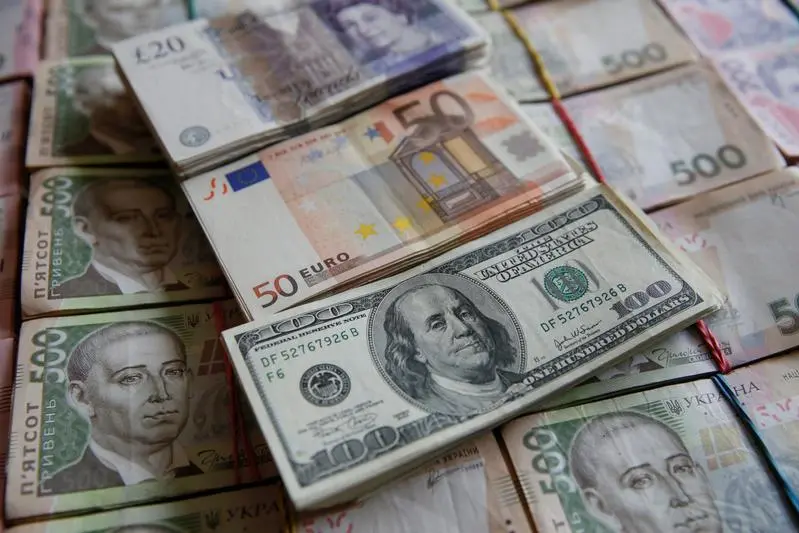PHOTO
LONDON - A rebound in risk appetite continued to propel riskier currencies on Wednesday, with the Australian dollar hitting a one-week high, while the euro rose against the dollar as fears the Omicron variant would knock economies off course eased.
Currency markets were generally calm as stocks extended their rebound and investors took comfort from signs the latest COVID-19 variant would not derail the economic recovery.
The dollar index, which measures the greenback against six major peers, was flat at 96.25, while the euro climbed 0.1$ to $1.1281.
"With concerns just starting to ease over Omicron, attention in FX markets returns to the central bankers and how they plan to manage the growth versus inflation trade-off," ING analysts said, pointing to central bank meetings in Canada, Poland and Brazil, while the U.S. Federal Reserve meets next week.
The Aussie rose as high as $0.71425 and 81.07 yen, levels not seen since Dec. 1.
British drugmaker GSK said on Tuesday its antibody-based COVID-19 therapy with U.S. partner Vir Biotechnology was effective against all mutations of the new Omicron coronavirus variant.
The Reserve Bank of Australia also said Omicron was not expected to derail the country's economic recovery.
Investors had already cheered comments from the weekend that cases in South Africa - where the Omicron strain was first identified - showed milder symptoms.
For the week, Australia's currency is up 1.84% against the greenback, setting up its best performance in three months.
The Canadian dollar CAD=D3 marked a two-week high at C$1.26325 per greenback.
The Bank of Canada decides policy later on Wednesday and, while economists expect no change at that meeting, they forecast rate hikes as early as the middle of next year in a recent Reuters poll.
The U.S. Federal Reserve meets next week, with policymakers flagging in the run-up that an increase in the pace of stimulus tapering was likely, which would set up the possibility of earlier rate hikes.
The JOLTS report on U.S. job openings, due later on Wednesday, should provide further evidence of a tightening labour market, potentially adding fodder for bets on earlier Fed tightening.
Money markets are currently fully priced for a quarter point rate increase by June. FEDWATCH
The Chinese yuan hit the highest since May 2018 against the dollar in offshore trading, strengthening as far as 6.3509.
"There was no immediate catalyst for the move lower" in the dollar-yuan pair, but "the general improvement in risk sentiment as Omicron fears fade is a weight", Commonwealth Bank of Australia strategist Kimberley Mundy wrote in a research note.
The British pound recovered a bit of composure and held at $1.3239, consolidating around the middle of this week's trading range.
(Reporting by Tommy Wilkes; Additional reporting by Kevin Buckland in Tokyo; Editing by Alex Richardson) ((saikat.chatterjee@thomsonreuters.com; +44-20-7542-1713; Reuters Messaging: saikat.chatterjee.reuters.com@reuters.net))












